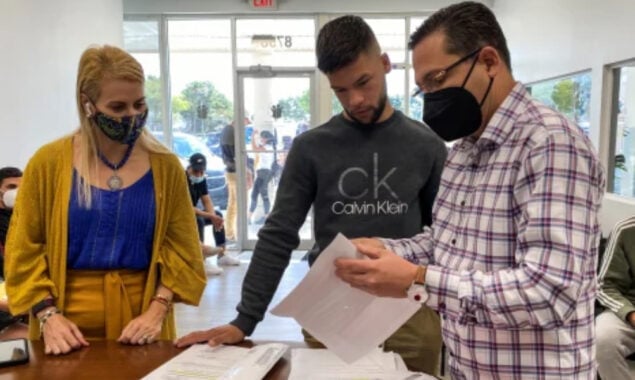Synopsis
After seeing three of his closest friends in Cuba receive prison sentences after planning a protest in a WhatsApp group, Alex, 25, decided it was time to leave.

After seeing three of his closest friends in Cuba receive prison sentences after planning a protest in a WhatsApp group, Alex, 25, decided it was time to leave.
“Someone had already warned me I would be next,” said Alex, who spoke on condition of anonymity since he fears his statements could have repercussions for his family in Cuba.
Alex, from the central province of Sancti Spiritus, said he and a friend booked a flight to Nicaragua in early January, and they made their way to the U.S.-Mexico border using apps like Zenly and Maps.me to guide them.
Alex is part of a growing exodus from Cuba that is on pace to break records. During the six months between October and March, nearly 80,000 Cubans were apprehended at the U.S.-Mexico border. The number of Cuban migrants crossing the border in March outpaced those arriving from Central America. Senior U.S. officials previously told NBC News they are largely unable to deport Cubans because their government refuses to take them back.
While relations between the U.S. and Cuba have deteriorated over the past several years, officials from both countries are set to meet Thursday in Washington to discuss the spike in migration.
“I have never seen anything like this, and I have been doing this for 30 years,” said Oasis Peña, who works with different organizations, including Integrum Medical Group and the Immigrant Resource Center, that aid and advise newly arrived families on available resources. “We’re seeing a new generation of Cubans without family or contacts here.”
Experts expect the number of Cuban migrants to continue to increase as the Biden administration prepares to lift Title 42, a public health rule that has allowed U.S. authorities to expel migrants seeking asylum.
Cuba largely blames the U.S. for the spike in migration, saying ongoing economic sanctions, as well as the closure of the Havana embassy’s consular section, encourage Cubans to seek alternative forms of migration. For the past few years following the downsizing of the embassy during the Trump administration, the U.S. has not been processing the 20,000 annual migrant visas it agreed to almost three decades ago.
Cuba is in the midst of a severe economic crisis, with shortages of food and medicine as well as soaring inflation. U.S. sanctions, tightened under former President Donald Trump, aggravated Cuba’s economy. The pandemic also hit the island hard: Cuba shut its borders for eight months and has struggled to boost tourism since reopening, though it has received praise for containing the spread of the virus and for developing its vaccines.
The dire economic situation led to islandwide protests in July that were followed by a heavy crackdown and mass trials with stiff prison sentences for some of the protesters.
Like in years past, many of the Cubans leaving are young, worrying many about the demographics of the island. The population size is decreasing, while the percentage of older people is growing. In Florida, the wave of migration injects new life into the already established Miami culture and will continue shaping politics for years to come.
Read More News On
Catch all the International News, Breaking News Event and Latest News Updates on The BOL News
Download The BOL News App to get the Daily News Update & Follow us on Google News.




